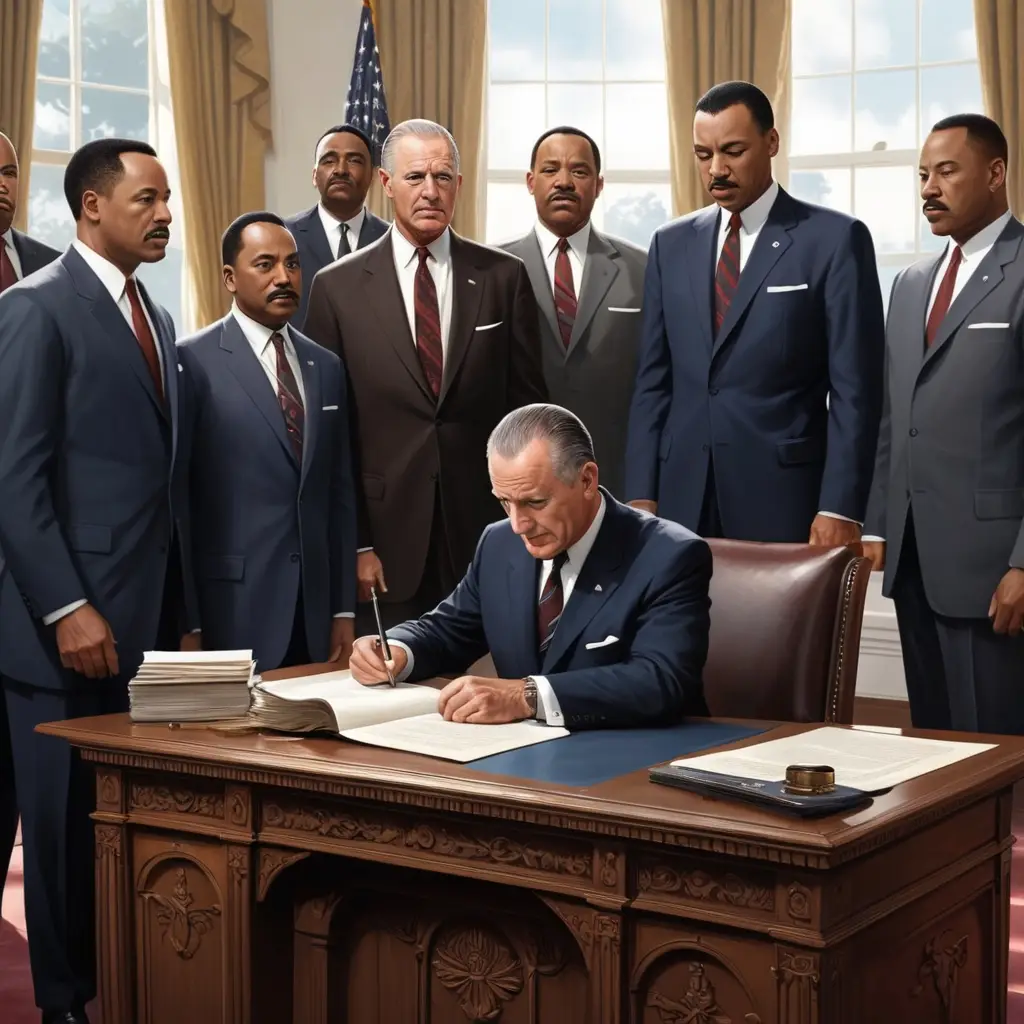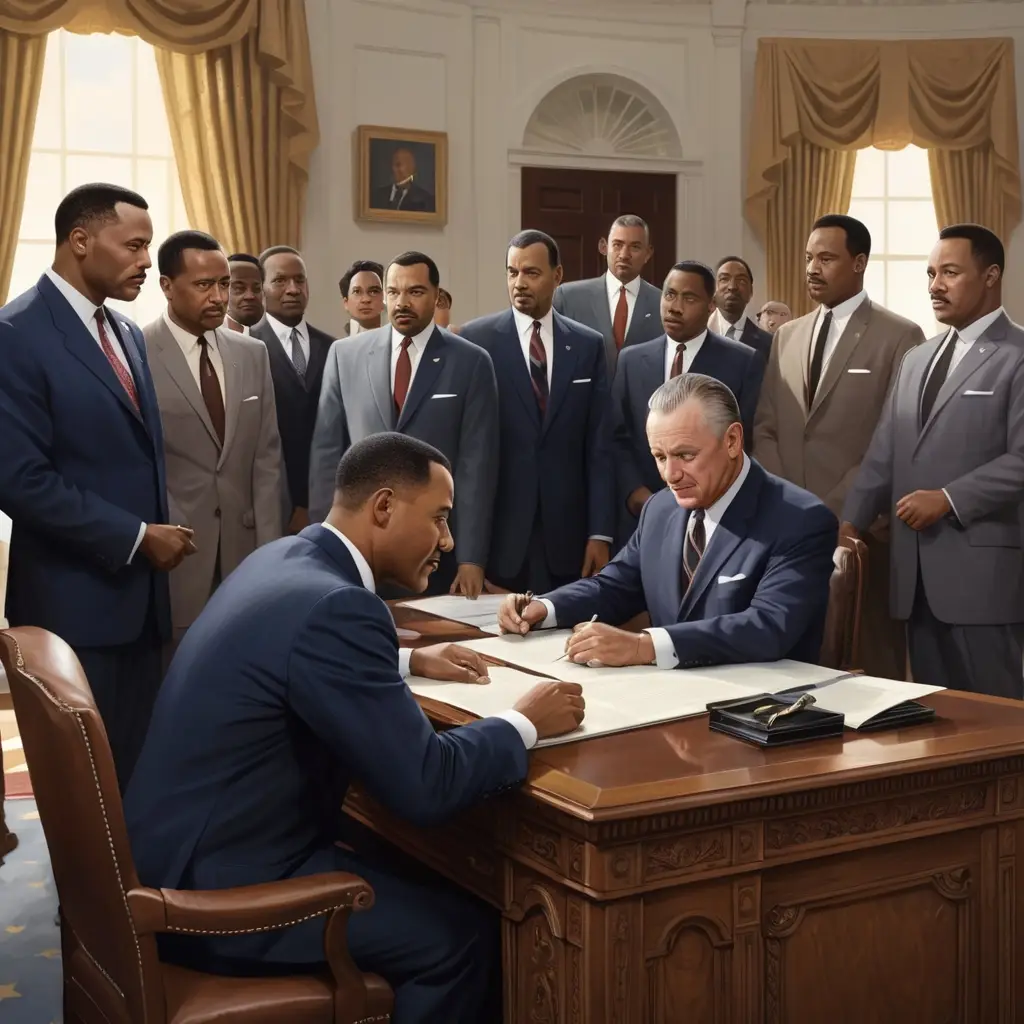The Civil Rights Act
The Civil Rights Act: A Landmark Legislation in American History
The Civil Rights Act of 1964 represents a pivotal moment in American history. This legislation not only addressed systemic racial discrimination but also redefined societal norms on gender, race, and religion in public and private sectors. Let’s dive deep into this groundbreaking act, its significance, and how it transformed the landscape of American civil liberties.

[su_box title=”Civil Rights Act – Next years” box_color=”#fb0400″]
- Wednesday, 2 July 2025
- Thursday, 02 July 2026
- Friday, 02 July 2027
- Sunday, 02 July 2028
[/su_box]
What Is the Civil Rights Act?
The Civil Rights Act of 1964 is a comprehensive piece of legislation that aimed to outlaw discrimination based on race, color, religion, sex, or national origin. It primarily sought to dismantle legal segregation in public places, schools, and employment, thus promoting equality.
Why Was the Civil Rights Act Necessary?
Before the Civil Rights Act, segregation was ingrained in many parts of American society. Laws often referred to as “Jim Crow” laws, especially in the South, enforced the separation of white and Black Americans in public spaces such as schools, restaurants, and buses.
The Background of the Civil Rights Movement
The Rise of the Civil Rights Movement
The Civil Rights Movement of the 1950s and 1960s laid the foundation for the Civil Rights Act. Driven by courageous individuals like Martin Luther King Jr., Rosa Parks, and Malcolm X, the movement garnered national attention and created momentum for change.
Key Events Leading to the Civil Rights Act
Several significant events set the stage for the legislation, including:
- Brown v. Board of Education (1954): This Supreme Court ruling declared segregation in public schools unconstitutional.
- The Montgomery Bus Boycott (1955-1956): Sparked by Rosa Parks’ refusal to give up her seat, this boycott became a hallmark of nonviolent protest.
- The March on Washington (1963): Where Martin Luther King Jr. delivered his iconic “I Have a Dream” speech, galvanizing national support for racial equality.
The Legislative Process of the Civil Rights Act
President Kennedy’s Involvement
In 1963, President John F. Kennedy proposed civil rights legislation, recognizing the growing tension and civil unrest in the country. However, his assassination delayed the bill’s progress.
Lyndon B. Johnson’s Role
After Kennedy’s death, President Lyndon B. Johnson took up the mantle, advocating fervently for the bill’s passage. Johnson utilized his political experience to navigate Congress and overcome strong opposition, particularly from Southern lawmakers.

Key Provisions of the Civil Rights Act of 1964
The Civil Rights Act is divided into several sections, each focusing on different areas of discrimination:
Title I: Voting Rights
Although the 15th Amendment granted African Americans the right to vote, discriminatory practices like literacy tests and poll taxes remained in place. Title I sought to eliminate these barriers, paving the way for future voting rights protections.
Title II: Public Accommodations
This section prohibited segregation in public places such as hotels, restaurants, theaters, and parks. This was a significant blow to the “Jim Crow” laws prevalent in Southern states.
Title III: Desegregation of Public Facilities
Title III empowered the federal government to file lawsuits against states or entities that refused to desegregate public spaces, ensuring equal access for all citizens.
Title IV: Public Education
Building on the momentum of the Brown v. Board decision, Title IV aimed to enforce school desegregation. Federal agencies could provide assistance and intervene where necessary to ensure compliance.
Title VI: Federally Funded Programs
One of the most powerful sections, Title VI mandated that any institution or organization receiving federal funding must not discriminate based on race, color, or national origin.
Title VII: Employment Discrimination
Perhaps the most far-reaching provision, Title VII outlawed discrimination in employment based on race, color, religion, sex, or national origin. It also led to the creation of the Equal Employment Opportunity Commission (EEOC), which oversees workplace discrimination claims.
The Impact of the Civil Rights Act
Immediate Changes
The passage of the Civil Rights Act led to significant, immediate changes. Segregation in public places became illegal, and many discriminatory employment practices were outlawed.
Long-Term Effects
Over the long term, the Civil Rights Act paved the way for future legislation, such as the Voting Rights Act of 1965 and the Fair Housing Act of 1968. It also established a legal precedent for other marginalized groups to challenge discrimination.
Challenges and Controversies
Opposition to the Act
Despite its historic importance, the Civil Rights Act faced considerable opposition, especially from Southern politicians. Filibusters were used to delay its passage, and some states attempted to resist its implementation.
The Role of the Supreme Court
The Supreme Court played a crucial role in upholding the constitutionality of the Civil Rights Act. In cases like Heart of Atlanta Motel, Inc. v. United States (1964), the court ruled that Congress had the authority to prohibit discrimination in public accommodations under the Commerce Clause.
How the Civil Rights Act Influences Today’s Society
Workplace Equality
Title VII’s prohibition of employment discrimination continues to shape modern workplaces. Issues like sexual harassment, gender equality, and LGBTQ+ rights all find their roots in this groundbreaking legislation.
Ongoing Struggles
While the Civil Rights Act made significant strides, challenges remain. Issues like systemic racism, voter suppression, and police brutality highlight the ongoing need for vigilance and reform in civil rights protections.
Conclusion: The Legacy of the Civil Rights Act
The Civil Rights Act of 1964 transformed American society by challenging deeply entrenched systems of racial inequality and discrimination. Its far-reaching provisions laid the foundation for future civil rights advancements, fostering a more inclusive and equitable nation.
{finish}
5 Frequently Asked Questions (FAQs)
- What did the Civil Rights Act accomplish?
It outlawed discrimination in public spaces, employment, and federally funded programs, significantly advancing racial equality. - Who signed the Civil Rights Act of 1964 into law?
President Lyndon B. Johnson signed the Civil Rights Act into law on July 2, 1964. - Why was the Civil Rights Act important?
It was crucial in dismantling legal segregation and provided protections against discrimination based on race, color, religion, sex, or national origin. - How did the Civil Rights Act affect education?
Title IV of the act enforced desegregation in public schools, building on the precedent set by the Brown v. Board of Education decision. - Does the Civil Rights Act still apply today?
Yes, it remains a cornerstone of American civil rights law, influencing workplace equality, voting rights, and other anti-discrimination efforts.


